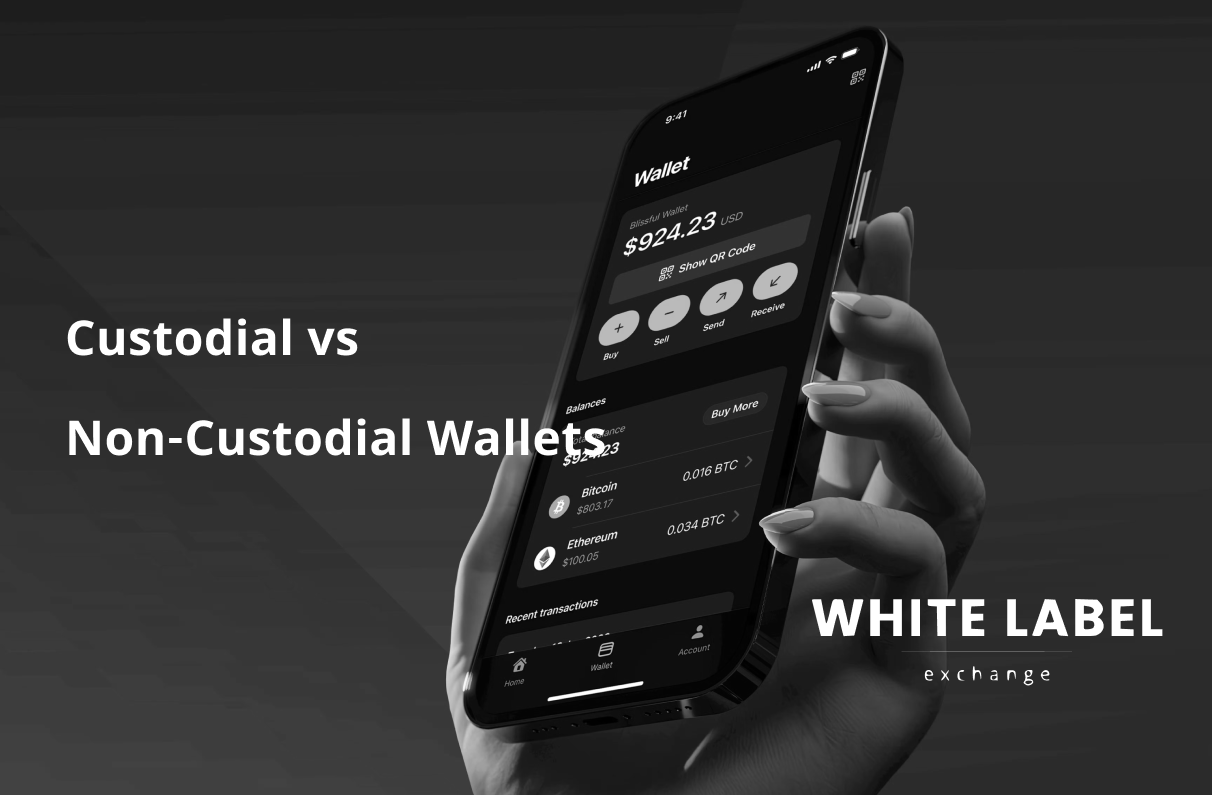As cryptocurrency adoption continues to expand globally, understanding the tools and systems that enable secure participation in the blockchain ecosystem becomes more important than ever. One of the fundamental pillars of crypto security and user experience is the type of wallet you use. At the core of this decision lies the distinction between custodial vs non-custodial wallets.
Whether you’re a beginner buying your first digital asset or a platform provider considering infrastructure for users, understanding the difference between custodial and non-custodial wallets is essential. This article unpacks the core mechanics, use cases, benefits, and trade-offs of each wallet type, helping users and businesses alike make informed decisions.
What Are Custodial and Non-Custodial Wallets?
Let’s start with the basics: what is a custodial and non-custodial wallet?
A custodial wallet is a type of crypto wallet where a third party — typically a crypto exchange, trading platform, or wallet service provider — holds the private keys on behalf of the user. This means the custodian is responsible for safeguarding the assets, managing security, and enabling access.
A non-custodial wallet, by contrast, gives the user full control of their private keys. This means the user alone is responsible for accessing, storing, and securing their crypto. No third party can move or freeze funds, but also — no one can help recover them if access is lost.
This distinction — custody vs self-custody — defines how much control and responsibility a user or platform has over the digital assets they interact with.
Key Differences Between Custodial and Non-Custodial Wallets
To better understand the custodian and non-custodial wallet debate, let’s explore their practical differences:
Ownership of Private Keys
- Custodial Wallet: The platform/service holds the private keys.
- Non-Custodial Wallet: You, the user, control the private keys.
Recovery Options
- Custodial: Forgot your password? You can usually reset access.
- Non-Custodial: Lose your keys or recovery phrase? Your assets are likely gone forever.
Security Risks
- Custodial: Assets are stored on centralized systems — potentially vulnerable to hacks.
- Non-Custodial: You are only at risk if your personal device or seed phrase is compromised.
Ease of Use
- Custodial: Typically easier for beginners; more intuitive interfaces.
- Non-Custodial: Requires more technical knowledge and responsibility.
Regulatory Oversight
- Custodial: Often subject to KYC/AML regulations and government intervention.
- Non-Custodial: Usually decentralized and pseudonymous, offering more privacy.
These distinctions illustrate why the custodial vs non-custodial wallet decision matters, especially in different use cases: daily trading vs long-term holding, retail onboarding vs institutional asset management.
Custodial Wallets: Convenience Meets Compliance
Custodial wallets are often offered by centralized exchanges like Binance, Coinbase, Kraken, or white-label platforms. In this setup, the user creates an account, deposits funds, and accesses them through the platform’s interface. All private key management is handled in the background.

Advantages:
- Simplicity: Great for beginners who are unfamiliar with blockchain key management.
- Account Recovery: Lost credentials can be reset through customer support.
- Integrated Services: Seamless access to trading, staking, swapping, and fiat gateways.
- Compliance: Suited for businesses and institutions needing regulatory alignment.
Trade-Offs:
- Control Loss: Users rely entirely on the custodian’s infrastructure and trustworthiness.
- Custodial Risk: If the platform is hacked, mismanaged, or collapses — user funds could be at risk.
As the crypto space matures, white-label exchange solutions often opt for custodial wallets to reduce friction in the user experience and to facilitate easier onboarding of non-technical users.
Non-Custodial Wallets: Control and Sovereignty
A non-custodial wallet is the purest form of crypto ownership — your keys, your coins. These wallets, like MetaMask, Trust Wallet, or hardware devices like Ledger and Trezor, are built for decentralization and autonomy.

Advantages:
- Full Control: Only the user can access and move their assets.
- Privacy: No mandatory identity verification or third-party access.
- Security: Funds are immune to centralized exchange hacks.
- DeFi Access: Required for interacting directly with decentralized protocols and smart contracts.
Trade-Offs:
- Responsibility: You must manage your own backups and recovery methods.
- Complexity: Interface and operations can be overwhelming for new users.
- Limited Support: No way to retrieve assets if the private key is lost.
For users who value privacy, self-sovereignty, or are participating in decentralized ecosystems, a non-custodial solution is often non-negotiable.
Choosing Between Custodial and Non-Custodial: Use Case Matters
There is no one-size-fits-all answer to the non-custodial vs custodial wallet debate. The best choice depends on your goals, risk profile, and technical comfort.
For example:
- Everyday Retail Users: May prefer custodial wallets for ease of use and support.
- Long-Term Holders (HODLers): Often gravitate toward non-custodial wallets or hardware devices for secure, offline storage.
- DeFi Users: Require non-custodial wallets for full access to decentralized protocols.
- Institutions: Usually favor custodial services with multi-signature, compliance layers, and insurance.
Additionally, many white-label crypto platforms choose to implement both — providing custodial wallets by default while enabling users to withdraw to their own non-custodial addresses.
Hybrid Approaches and Innovations
As wallet technology evolves, the line between custodial vs non-custodial wallets is starting to blur. Solutions like multi-party computation (MPC), social recovery wallets, and smart contract wallets aim to combine the security of self-custody with the usability of centralized services.
We are now seeing:
- Semi-custodial wallets with optional user key management
- Non-custodial mobile apps that guide users through backup procedures
- Enterprise-grade custodians offering APIs for DeFi access without compromising security
For crypto startups and blockchain businesses, integrating flexible wallet infrastructure that serves both user types is becoming essential.
Final Thoughts: Why Wallet Choice Defines Crypto Experience
In the crypto world, control equals responsibility. The decision between custodial and non-custodial wallets isn’t just about technology — it reflects your philosophy on ownership, trust, and freedom.
Custodial wallets offer simplicity, speed, and support — making them ideal for newcomers and exchange environments. Non-custodial wallets offer maximum control and decentralization — aligning with the original ethos of blockchain.
As crypto continues to merge with mainstream finance, the ability to offer both custodial and non-custodial options will be a defining feature of competitive platforms.
Understanding the difference between custodial and non-custodial wallets empowers users, developers, and platforms to make decisions that align with their goals, values, and security needs — laying the foundation for a safer, more decentralized digital future.

